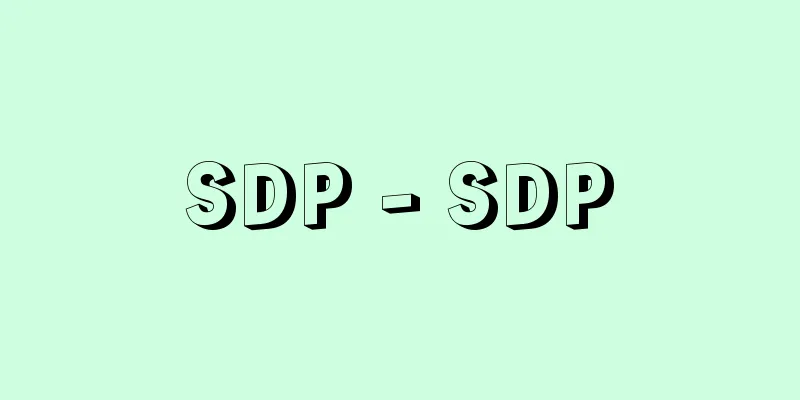Forcing cultivation - forcing cultivation

|
A cultivation method (crop type) for vegetables and flowers. The aim is to start cultivation earlier than the normal cultivation period and harvest and ship early. This is because it is earlier than the peak season, so it can be traded favorably and a higher income can be obtained. Since the sowing period is earlier than natural, seeds are sown in a heated or insulated seedbed and raised, and then planted in an insulated facility such as a greenhouse, glasshouse, vinyl greenhouse, or vinyl tunnel, where they are grown until harvest. When the covering is removed midway through the growth process and the plants are grown in the open, this is called semi-forced cultivation, and the harvest and shipping period is slightly later than with normal forced cultivation. Forcing cultivation is said to have started in Japan as early as the Edo period, but it has only developed in earnest in recent years. Forcing cultivation to ship crops such as udo earlier than their season began early on, and forcing cultivation of strawberries also has a long history. Currently, as part of year-round cultivation, planned forcing cultivation with a set shipping period is practiced in various regions for a great many vegetables, such as cucumbers, melons, pumpkins, watermelons, tomatoes, eggplants, peppers, green beans, peas, spinach, and chrysanthemums, as well as flowers such as cyclamens. Areas with many sunny days in winter and warm climates, such as the Pacific coast of Tokaido, Shikoku, and southern Kyushu, are suitable for forcing cultivation, but forcing cultivation was practiced early on in areas close to consumer areas, such as large cities and hot spring resorts, taking advantage of their geographical advantages. Nowadays, with the development of transportation, it has spread to areas far from consumer areas, and these often form collective forcing horticulture areas. [Hoshikawa Kiyochika] Source: Shogakukan Encyclopedia Nipponica About Encyclopedia Nipponica Information | Legend |
|
野菜や花卉(かき)などの栽培方法(作型)の一つ。普通の栽培時期よりも早く栽培を開始し、早く収穫して出荷することを目的とする。旬(しゅん)より早いので有利に取引され収入が多く得られるためである。播種(はしゅ)期が自然より早いので、加温あるいは保温した苗床に播種して育苗し、温室、ガラス室、ビニルハウス、ビニルトンネルなどの保温施設に定植し、その施設内で収穫まで育てる。生育の途中で被覆を除いて露地状態で育てる場合を半促成栽培といい、普通の促成栽培より収穫・出荷期がやや遅くなる。 促成栽培は日本ではすでに江戸時代から始められたといわれるが、本格的には近年になって発達した。ウドなどを旬より早く出荷するための促成栽培は早くから行われ、またイチゴの促成栽培も歴史が古い。現在では周年栽培の一環として、出荷期を定めた計画的な促成栽培が、キュウリ、メロン、カボチャ、スイカ、トマト、ナス、ピーマン、インゲンマメ、エンドウ、ホウレンソウ、シュンギクなどきわめて多くの野菜やシクラメンなど花卉類について、各地で行われている。促成栽培にとっては、冬季に晴天が多く温暖な地域、すなわち東海道、四国、南九州などの太平洋岸が適するが、とくに大都市や温泉場など消費地の近郊地帯が地の利を得て早くから促成栽培が行われた。いまでは交通機関の発達により消費地に遠い土地にも普及し、それらは集団的な促成園芸地帯を形成していることが多い。 [星川清親] 出典 小学館 日本大百科全書(ニッポニカ)日本大百科全書(ニッポニカ)について 情報 | 凡例 |
>>: Soxhlet extractor - Soxhlet extractor
Recommend
Utagawa Yoshitora
Year of birth: Year of birth and death unknown. Uk...
Amami Oshima earthquake
...However, there have been examples of large ear...
Kuju [town] - Kuju
An old town in Naoiri County, western Oita Prefect...
POD - P.O.D.
The Pocket Oxford Dictionary : The Oxford Pocket E...
Patent attorney - Benrishi (English spelling)
A patent attorney is someone who has national qua...
Alpha Centauri C - Alpha Centauri C
…It reaches its zenith at 9 p.m. in mid-June. Pro...
Dahlmann, Friedrich Christoph
Born: May 13, 1785, Wismar Died December 5, 1860. ...
advaitavāda (English spelling)
...In Sanskrit, it is called Advaita. The philoso...
Oxo-process cobalt catalyst
… Examples of catalysts playing a central role in...
Georges Dumézil
French linguist and mythologist. He was also a me...
round
…a type of polyphonic singing that evokes a circl...
Bernard, M.
...The Society of Seasons was formed in response ...
wrinkled bark beetle
...The thoracic legs of the larvae are small comp...
Holy Thursday
Christian holiday. Thursday before Easter. Commemo...
Rapid eye movement - Rapid eye movement
… REM sleep alternates with non-REM sleep at appr...









